Government Funding for Established Businesses
Access to funding is crucial for businesses, whether to launch a new project, innovate, or simply grow. In Canada, there are numerous grants and funding programs available to support businesses in their development. This support is provided by various levels of government, as well as private organizations and financial institutions. Understanding the available funding options, knowing how to obtain these grants, and preparing a solid business plan are essential steps to maximize your chances of success.
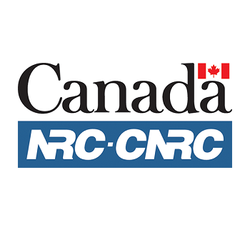
Industrial Research Assistance Program (IRAP) — Financial Assistance
National Research Council Canada (NRC)- Up to 75% of project cost
- Professional, scientific and technical services

Scientific Research and Experimental Development (SR&ED) — Tax Incentive Program
Canada Revenue Agency (CRA)- Up to 35% of project cost
- All industries

PSCE – Component 2
Investissement Québec (IQ)- Maximum amount : 60,000 $
- Up to 50% of project cost
- Manufacturing
- Wholesale trade
- Transportation and warehousing
- Information and cultural industries
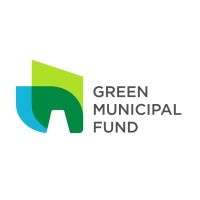
Capital project: Community Energy Systems
Green Municipal Fund (GMF)- Maximum amount : 10,000,000 $
- Up to 80% of project cost
- Utilities
- Construction
- Administrative and support, waste management and remediation services
- Public administration

MAPAQ — Food Processing Program — Component 2
Ministry of Agriculture, Fisheries and Food (MAPAQ)- From $25,000 to $150,000
- Up to 60% of project cost
- Manufacturing
Tips to Maximize Your Chances of Obtaining a Grant
Obtaining a grant can be a powerful lever for the development of your business, but the competition is often fierce. To maximize your chances of success, it is essential to prepare a strong application, develop strategic collaborations, and use the funds obtained effectively to ensure sustainable growth. Here are some tips to help you navigate this process successfully.

Efficient Solutions Program — Medium and Large Businesses Component
Hydro-Québec- Maximum amount : 5,000,000 $
- Up to 75% of project cost
- All industries

ESSOR – Component 1C: Support for investment projects (implementing a digital plan)
Investissement Québec (IQ)- Maximum amount : 50,000 $
- Up to 50% of project cost
- All industries
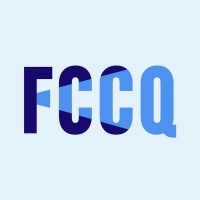
Accueillez un stagiaire
Fédération des chambres de commerce du Québec (FCCQ)- Maximum amount : 7,000 $
- Up to 50% of project cost
- All industries

SCALE AI — Acceleration
Scale AI Cluster- Maximum amount : 50,000 $
- Manufacturing
- Transportation and warehousing
- Professional, scientific and technical services

Development of E-Business Tax Credit (CDAE)
Investissement Québec (IQ)- Up to 30% of project cost
- Information and cultural industries
- Finance and insurance
- Professional, scientific and technical services
Discover how much grant funding is available for your business
Subsidize your projects with grants!
Use our free grant estimator to quickly identify the available grant amounts for which your company may be eligible.

Research, Innovation and Commercialization Tax Credit (CRIC)
Gouvernement du Québec- From $50,000 to $1,000,000
- Up to 30% of project cost
- Manufacturing
- Professional, scientific and technical services

Clean Technology Manufacturing (CTM) Investment Tax Credit (ITC)
Canada Revenue Agency (CRA)- Up to 30% of project cost
- Mining, quarrying, and oil and gas extraction
- Manufacturing

Clean Technology (CT) Investment Tax Credit (ITC)
Natural Resources Canada (NRCan)- Up to 30% of project cost
- All industries

Strategic Innovation Fund (SIF)
Innovation, Science and Economic Development Canada (ISED)- Up to 50% of project cost
- Manufacturing
- Transportation and warehousing
- Information and cultural industries
- Professional, scientific and technical services

AI-Powered Supply Chains Cluster (Scale AI)
Global Innovation Clusters (GIC)- Maximum amount : 50,000 $
- Up to 50% of project cost
- Construction
- Manufacturing
- Retail trade
- Transportation and warehousing
Access over 4000 different funding opportunities
Try the helloDarwin platform today and find programs that fit your needs
The helloDarwin application makes it easy to unlock grants so your business can grow faster—with less hassle and more impact.

Green Industrial Facilities and Manufacturing Program (GIFMP) — Industrial Facility Track
Natural Resources Canada (NRCan)- Minimum amount : 40,000 $
- Up to 50% of project cost
- Manufacturing

AI Compute Access Fund
Innovation, Science and Economic Development Canada (ISED)- From $67,000 to $3,350,000
- Up to 67% of project cost
- All industries
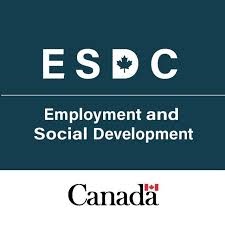
Canada Summer Jobs (CSJ)
Employment and Social Development Canada (ESDC)- Up to 50% of project cost
- All industries

Support for biofood exports - individual projects
Ministry of Agriculture, Fisheries and Food (MAPAQ)- From $15,000 to $100,000
- Up to 50% of project cost
- Agriculture, forestry, fishing and hunting
- Manufacturing
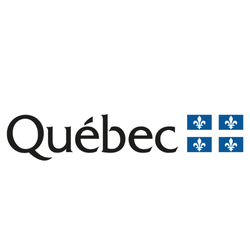
Individual Market Access Support (SIAM)
Aliments du Québec- From $20,000 to $100,000
- Up to 50% of project cost
- Manufacturing
Download the official 2026 grants guide
Access key insights to maximize your grant funding opportunities
Understand the different funding programs and find the best options for your business.

Incentives for medium and heavy-duty zero-emission vehicles (iMHZEV) Program
Transport Canada- Maximum amount : 1,000,000 $
- Up to 75% of project cost
- Retail trade
- Transportation and warehousing

Ontario Innovation Tax Credit (OITC)
Ontario Ministry of Finance- Up to 8% of project cost
- Professional, scientific and technical services
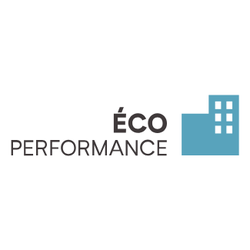
ÉcoPerformance — Recommissioning of building mechanical systems
Gouvernement du Québec- Maximum amount : 100,000 $
- Up to 75% of project cost
- Agriculture, forestry, fishing and hunting
- Manufacturing
- Educational services
- Other services (except public administration)

Green Freight Program — Assess and Retrofit
Natural Resources Canada (NRCan)- Maximum amount : 250,000 $
- Up to 75% of project cost
- Transportation and warehousing

NGen — AI For Manufacturing Challenge (AI4M)
Next Generation Manufacturing Canada (NGen)- From $1,500,000 to $3,200,000
- Up to 40% of project cost
- Manufacturing
Find tailored funding for your business
Discover more grants on the helloDarwin platform
Look through over 4,000 grants, tax credits, loans and more financial aid on the helloDarwin application.

Panorama Program
Investissement Québec (IQ)- From $250,000 to $1,000,000
- Agriculture, forestry, fishing and hunting
- Manufacturing

Financing to respond to the offensive of new tariffs and for initiatives for resilient and exporting companies (FRONTIERE)
Investissement Québec (IQ)- Maximum amount : 50,000,000 $
- Up to 25% of project cost
- Agriculture, forestry, fishing and hunting
- Mining, quarrying, and oil and gas extraction
- Manufacturing

Workforce Training Measure (MFOR)
Gouvernement du Québec- Maximum amount : 100,000 $
- Up to 50% of project cost
- All industries

Creative Export Canada (CEC) — Export-Ready Stream
Canadian Heritage- Maximum amount : 2,500,000 $
- Up to 75% of project cost
- Information and cultural industries
- Arts, entertainment and recreation

NovaScience Program - Support for projects in scientific culture and innovation
Gouvernement du Québec- Maximum amount : 200,000 $
- Up to 80% of project cost
- Information and cultural industries
- Professional, scientific and technical services
- Educational services
Tired of scrolling through all these programs?
Filter grants relevant for your company on the helloDarwin platform
Sort over 4,000 business funds by your industry, projects and location with helloDarwin's free app.

Industrial Research Assistance Program (IRAP) — Youth Employment Program (YEP)
National Research Council Canada (NRC)- Maximum amount : 30,000 $
- Professional, scientific and technical services

Green Freight Program — Repower and Replace
Natural Resources Canada (NRCan)- Maximum amount : 5,000,000 $
- Up to 50% of project cost
- Transportation and warehousing
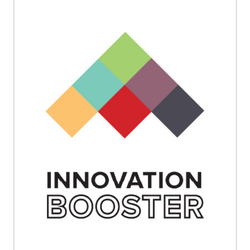
CFIN Innovation Booster
Canadian Food Innovation Network (CFIN)- From $20,000 to $100,000
- Up to 50% of project cost
- Accommodation and food services

Export and cultural visibility support program
Société de développement des entreprises culturelles (SODEC)- Maximum amount : 160,000 $
- Up to 50% of project cost
- Information and cultural industries

Quebec Initiative for Construction 4.0 — Stream 1
Groupe BIM du Québec (GBQ)- Maximum amount : 100,000 $
- Up to 50% of project cost
- Construction
Tips to Maximize Your Chances of Obtaining a Grant
Obtaining a grant can be a powerful lever for the development of your business, but the competition is often fierce. To maximize your chances of success, it is essential to prepare a strong application, develop strategic collaborations, and use the funds obtained effectively to ensure sustainable growth. Here are some tips to help you navigate this process successfully.

Ecocamionnage Program — Logistics Project Component
Minister of Transport and Sustainable Mobility of Quebec- Up to 15% of project cost
- Transportation and warehousing

Support for Innovation and Productivity for Québec manufacturing companies (SIPEM) - Part 1
PROMPT- Maximum amount : 5,000 $
- Up to 50% of project cost
- Manufacturing

ESSOR – Component 1B: Support for investment projects (digital diagnostics)
Investissement Québec (IQ)- Maximum amount : 20,000 $
- Up to 50% of project cost
- All industries

Electricity Management Systems
Hydro-Québec- Maximum amount : 175,000 $
- Up to 50% of project cost
- Manufacturing

CanExport SMEs
Trade Commissioner Service (TCS)- From $10,000 to $50,000
- Up to 50% of project cost
- All industries
Discover how much grant funding is available for your business
Subsidize your projects with grants!
Use our free grant estimator to quickly identify the available grant amounts for which your company may be eligible.

Innovative Solutions Canada Program
Innovation Canada- No Condition
- All industries

ESSOR – Component 2: Support for investment projects promoting productivity and business expansion
Investissement Québec (IQ)- Minimum amount : 50,000 $
- Up to 30% of project cost
- Manufacturing
- Wholesale trade
- Retail trade
- Transportation and warehousing

Mitacs Accelerate
Mitacs- From $7,500 to $15,000
- Professional, scientific and technical services
- Educational services
- Health care and social assistance

Support for Innovation and Productivity for Québec manufacturing companies (SIPEM) - Part 2
PROMPT- Maximum amount : 500,000 $
- Up to 50% of project cost
- Manufacturing
- Professional, scientific and technical services
- Educational services

NRC IRAP – Support for clean technology
National Research Council Canada (NRC)- No Condition
- Utilities
- Construction
- Manufacturing
- Transportation and warehousing
Access over 4000 different funding opportunities
Try the helloDarwin platform today and find programs that fit your needs
The helloDarwin application makes it easy to unlock grants so your business can grow faster—with less hassle and more impact.

Program to support the development of agriculture and agri-food in the regions
Ministry of Agriculture, Fisheries and Food (MAPAQ)- No Condition
- Agriculture, forestry, fishing and hunting
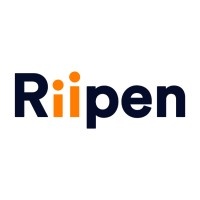
Riipen — Level UP
Riipen- No Condition
- All industries

Mitacs Accelerate International
Mitacs- From $15,000 to $15,000
- Up to 50% of project cost
- All industries
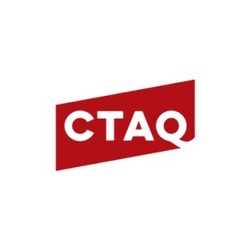
Digital Transformation Offensive Program (OTN) — Stream 1 – Support
Conseil de la transformation alimentaire du Québec (CTAQ)- From $10,000 to $25,000
- Up to 85% of project cost
- Manufacturing

Tax holiday for a new business created to commercialize intellectual property
Ministère de l'économie, de l'innovation et de l'énergie du Québec (MEIE)- No Condition
- Manufacturing
- Information and cultural industries
- Educational services
Download the official 2026 grants guide
Access key insights to maximize your grant funding opportunities
Understand the different funding programs and find the best options for your business.

Employee Wage Subsidy
Gouvernement du Québec- No Condition
- All industries

Investment and innovation tax credit (IITC)
Revenu Québec- Up to 25% of project cost
- All industries

Roulez Vert — Multi-unit building charging station rebate
Gouvernement du Québec- Maximum amount : 5,000 $
- Up to 50% of project cost
- All industries

Global Innovation Clusters
Innovation Canada- No Condition
- Manufacturing
- Information and cultural industries
- Professional, scientific and technical services

NRC IRAP Support for Intellectual Property
National Research Council Canada (NRC)- No Condition
- All industries
Find tailored funding for your business
Discover more grants on the helloDarwin platform
Look through over 4,000 grants, tax credits, loans and more financial aid on the helloDarwin application.

Creative Export Canada (CEC) — Export Development Stream (EDS)
Canadian Heritage- From $15,000 to $90,000
- Up to 75% of project cost
- Arts, entertainment and recreation

Technology and Business Demonstration
Hydro-Québec- Maximum amount : 500,000 $
- Up to 75% of project cost
- Utilities
- Manufacturing
- Professional, scientific and technical services

- From $3,000 to $90,000
- Information and cultural industries
- Arts, entertainment and recreation

PSCE – Component 1
Investissement Québec (IQ)- From $25,000 to $250,000
- Up to 50% of project cost
- All industries

Production program — French market budgets under $3.5M
Telefilm Canada- From $250,000 to $500,000
- Up to 33% of project cost
- Information and cultural industries
Tired of scrolling through all these programs?
Filter grants relevant for your company on the helloDarwin platform
Sort over 4,000 business funds by your industry, projects and location with helloDarwin's free app.

NovaScience Program — Support for the position of innovation and commercialization manager
Ministère de l'économie, de l'innovation et de l'énergie du Québec (MEIE)- Maximum amount : 75,000 $
- Up to 50% of project cost
- Professional, scientific and technical services

Canada Pavilion Program
Agriculture and Agri-Food Canada (AAFC)- No Condition
- Agriculture, forestry, fishing and hunting

ECO Canada — Student Work Placement Program
ECO Canada- Maximum amount : 5,000 $
- Up to 50% of project cost
- Professional, scientific and technical services
- Educational services

Program Supporting the Development of Tourist Attractions — Stream 2
Investissement Québec (IQ)- From $100,000 to $5,000,000
- Up to 50% of project cost
- Accommodation and food services
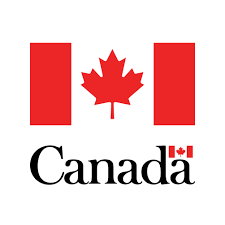
IP for Business
Canadian Intellectual Property Office (CIPO)- No Condition
- Manufacturing
- Information and cultural industries
- Professional, scientific and technical services
Tips to Maximize Your Chances of Obtaining a Grant
Obtaining a grant can be a powerful lever for the development of your business, but the competition is often fierce. To maximize your chances of success, it is essential to prepare a strong application, develop strategic collaborations, and use the funds obtained effectively to ensure sustainable growth. Here are some tips to help you navigate this process successfully.

Canadian Film or Video Production Tax Credit (CPTC)
Canada Revenue Agency (CRA)- Up to 25% of project cost
- Information and cultural industries
- Arts, entertainment and recreation

Farm Equipment Financing
Farm Credit Canada (FCC)- No Condition
- Agriculture, forestry, fishing and hunting

Women Entrepreneur Program
Farm Credit Canada (FCC)- No Condition
- Agriculture, forestry, fishing and hunting
- Accommodation and food services

Employment Integration Program for Immigrants and Visible Minorities
Gouvernement du Québec- Maximum amount : 5,000 $
- Up to 60% of project cost
- All industries

Program Supporting the Development of Tourist Attractions — Stream 1
Investissement Québec (IQ)- From $150,000 to $5,000,000
- Up to 50% of project cost
- Arts, entertainment and recreation
- Accommodation and food services
Discover how much grant funding is available for your business
Subsidize your projects with grants!
Use our free grant estimator to quickly identify the available grant amounts for which your company may be eligible.

Financial Compensation Program for the Restaurant Sector
Revenu Québec- No Condition
- Accommodation and food services

Equality for Sex, Sexual Orientation, Gender Identity and Expression Program
Women and Gender Equality Canada- No Condition
- Educational services
- Health care and social assistance
- Other services (except public administration)
- Public administration

Expanded Energy Management Program
Independent Electricity System Operator (IESO)- Maximum amount : 250,000 $
- Up to 50% of project cost
- Agriculture, forestry, fishing and hunting
- Mining, quarrying, and oil and gas extraction
- Utilities
- Construction

Program for efficiency in maritime, air, and rail transport - Infrastructure and equipment component
Minister of Transport and Sustainable Mobility of Quebec- Maximum amount : 4,000,000 $
- Up to 75% of project cost
- Transportation and warehousing

Innovative Solutions Canada — Testing stream
Innovation Canada- No Condition
- All industries
Access over 4000 different funding opportunities
Try the helloDarwin platform today and find programs that fit your needs
The helloDarwin application makes it easy to unlock grants so your business can grow faster—with less hassle and more impact.

XLerate Program
Independent Electricity System Operator (IESO)- Maximum amount : 15,000,000 $
- Up to 75% of project cost
- Manufacturing
- Health care and social assistance
- Public administration

Mitacs — Elevate
Mitacs- From $30,000 to $120,000
- Up to 50% of project cost
- Professional, scientific and technical services

African Swine Fever Industry Preparedness Program (ASFIPP) - Welfare Slaughter and Disposal Stream
Agriculture and Agri-Food Canada (AAFC)- Maximum amount : 1,000,000 $
- Up to 85% of project cost
- Agriculture, forestry, fishing and hunting
- Manufacturing

Efficient Solutions Program — Agricultural Component
Hydro-Québec- From $100 to $200,000
- Up to 75% of project cost
- Agriculture, forestry, fishing and hunting

PAMT — Workplace Apprenticeship
Gouvernement du Québec- No Condition
- All industries
Download the official 2026 grants guide
Access key insights to maximize your grant funding opportunities
Understand the different funding programs and find the best options for your business.

Protein Industries Canada — Technology Leadership
Protein Industries Canada- Up to 45% of project cost
- Agriculture, forestry, fishing and hunting
- Manufacturing

REGI — Business Scale-up and Productivity (BSP) - Northern Ontario
Government of Canada- Maximum amount : 500,000 $
- Up to 50% of project cost
- Manufacturing
- Professional, scientific and technical services

PSCE – Component 3
Investissement Québec (IQ)- Maximum amount : 100,000 $
- Up to 50% of project cost
- All industries

GHG Challenge Program - Industry
Environnement Québec (MELCC)- Maximum amount : 50,000,000 $
- Up to 75% of project cost
- Mining, quarrying, and oil and gas extraction
- Manufacturing

Hire a permanent foreign worker
Refugees and Citizenship Canada- No Condition
- All industries
Find tailored funding for your business
Discover more grants on the helloDarwin platform
Look through over 4,000 grants, tax credits, loans and more financial aid on the helloDarwin application.

Concertation pour l’emploi — Human resources management support
Gouvernement du Québec- Maximum amount : 4,800 $
- Up to 40% of project cost
- All industries

Ontario Research and Development Tax Credit (ORDTC)
Ontario Ministry of Finance- No Condition
- Professional, scientific and technical services

FAQDD — Écoemballage+ Stream 1
Fonds d'action Québécois pour le développement durable (FAQDD)- Maximum amount : 50,000 $
- Up to 75% of project cost
- Manufacturing
- Accommodation and food services

AgriScience Program – Projects
Agriculture and Agri-Food Canada (AAFC)- Maximum amount : 5,000,000 $
- Up to 70% of project cost
- Agriculture, forestry, fishing and hunting
- Manufacturing

Rail Safety Improvement Program (RSIP) - Research and Education Component
Transport Canada- Maximum amount : 1,000,000 $
- Up to 50% of project cost
- Transportation and warehousing
- Educational services
- Public administration
Tired of scrolling through all these programs?
Filter grants relevant for your company on the helloDarwin platform
Sort over 4,000 business funds by your industry, projects and location with helloDarwin's free app.
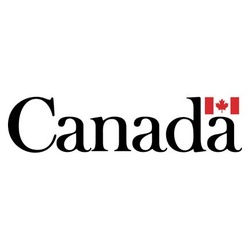
Temporary Foreign Worker Program (TFW)
Government of Canada- No Condition
- Agriculture, forestry, fishing and hunting
- Educational services
- Health care and social assistance

Enhanced Road Safety Transfer Payment Program (ERSTPP)
Transport Canada- Maximum amount : 10,000,000 $
- Up to 75% of project cost
- Transportation and warehousing
- Professional, scientific and technical services
- Educational services
- Other services (except public administration)

Maritime, Air, and Rail Transportation Efficiency Program - Pilot Project Component
Minister of Transport and Sustainable Mobility of Quebec- Maximum amount : 1,000,000 $
- Up to 75% of project cost
- Transportation and warehousing

Roulez Vert — Rebate for charging station at work
Gouvernement du Québec- Maximum amount : 49,000 $
- Up to 50% of project cost
- Utilities
- Construction
- Transportation and warehousing
- Professional, scientific and technical services

Fonds Écoleader — Specific implementation support
Fonds d'action Québécois pour le développement durable (FAQDD)- Maximum amount : 80,000 $
- Up to 75% of project cost
- All industries
Tips to Maximize Your Chances of Obtaining a Grant
Obtaining a grant can be a powerful lever for the development of your business, but the competition is often fierce. To maximize your chances of success, it is essential to prepare a strong application, develop strategic collaborations, and use the funds obtained effectively to ensure sustainable growth. Here are some tips to help you navigate this process successfully.

Fonds Écoleader — Specific location support – Component 2 business collaboration
Le Fonds Écoleader- Maximum amount : 400,000 $
- Up to 75% of project cost
- All industries

Canada Book Fund (CBF) — Support for Organizations — Internships
Canadian Heritage- Maximum amount : 22,500 $
- Up to 75% of project cost
- Information and cultural industries

AgriInnovate Program
Agriculture and Agri-Food Canada (AAFC)- Maximum amount : 5,000,000 $
- Up to 60% of project cost
- Agriculture, forestry, fishing and hunting

Magnet — Outcome Campus Connect
Magnet- Maximum amount : 7,000 $
- Educational services

Additional support for the circulation of shows
Société de développement des entreprises culturelles (SODEC)- Maximum amount : 275,000 $
- Information and cultural industries
- Arts, entertainment and recreation
Discover how much grant funding is available for your business
Subsidize your projects with grants!
Use our free grant estimator to quickly identify the available grant amounts for which your company may be eligible.

Economic development program to help revitalize territories (DEPART)
Investissement Québec (IQ)- No Condition
- Manufacturing
- Information and cultural industries
- Accommodation and food services

Capitale-Productivity
Quebec City- Maximum amount : 150,000 $
- Up to 40% of project cost
- All industries

GO Talent
Information and Communications Technology Council (ICTC)- No Condition
- Information and cultural industries

Green Industrial Facilities and Manufacturing Program — Energy Efficiency Solutions Track
Natural Resources Canada (NRCan)- Maximum amount : 20 $
- Up to 75% of project cost
- Manufacturing

Bioénergies — Analysis
Environnement Québec (MELCC)- No Condition
- Manufacturing
Access over 4000 different funding opportunities
Try the helloDarwin platform today and find programs that fit your needs
The helloDarwin application makes it easy to unlock grants so your business can grow faster—with less hassle and more impact.

Eastern Ontario Development Fund (EODF) — Business project loans
Government of Ontario- From $500,000 to $500,000
- Up to 15% of project cost
- Manufacturing

Southwestern Ontario Development Fund (SWODF) — Business project loans
Government of Ontario- From $500,000 to $500,000
- Up to 15% of project cost
- Manufacturing

Subsidy for universal access to businesses
City of Montreal (MTL)- Maximum amount : 15,000 $
- Up to 90% of project cost
- Retail trade
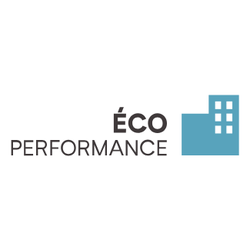
ÉcoPerformance — Standard Analysis Stream
Gouvernement du Québec- Maximum amount : 75,000 $
- Up to 50% of project cost
- Manufacturing
- Retail trade
- Professional, scientific and technical services

Support program for the development of reserved designations and promotional terms — Component 1
Ministry of Agriculture, Fisheries and Food (MAPAQ)- Maximum amount : 150,000 $
- Up to 75% of project cost
- Agriculture, forestry, fishing and hunting
Download the official 2026 grants guide
Access key insights to maximize your grant funding opportunities
Understand the different funding programs and find the best options for your business.

MEDTEQ+ — AVISÉ program
Consortium de recherche et d’innovation en technologies médicales du Québec- Maximum amount : 700,000 $
- Up to 50% of project cost
- Professional, scientific and technical services
- Health care and social assistance
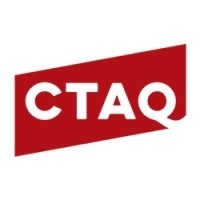
Digital Transformation Offensive program (OTN) — Stream 2 – Optimization
Conseil de la transformation alimentaire du Québec (CTAQ)- Minimum amount : 10,000 $
- Up to 75% of project cost
- Manufacturing

REGI — Business Scale-up and Productivity — CED (QC) – Private sector
Canada Economic Development for Quebec Regions (CED)- Up to 50% of project cost
- All industries

FAQDD — Returnable Container Recycling Equipment Modernization Program
Fonds d'action Québécois pour le développement durable (FAQDD)- From $7,500 to $7,500
- Up to 65% of project cost
- Retail trade

Canadian Agricultural Strategic Priorities Program
Agriculture and Agri-Food Canada (AAFC)- Maximum amount : 1,000,000 $
- Up to 50% of project cost
- Agriculture, forestry, fishing and hunting
Find tailored funding for your business
Discover more grants on the helloDarwin platform
Look through over 4,000 grants, tax credits, loans and more financial aid on the helloDarwin application.

Impulsion Fund
Investissement Québec (IQ)- From $250,000 to $2,000,000
- All industries

LogisVert — Financial assistance for installers
Hydro-Québec- Maximum amount : 250,000 $
- Up to 100% of project cost
- Construction

Quebec Initiative for Construction 4.0 — Stream 2
Groupe BIM du Québec (GBQ)- Up to 50% of project cost
- Construction
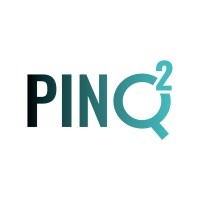
Digital and Quantum Innovation Platform — PINQ²
Plateforme d'Innovation Numérique et Quantique- No Condition
- Manufacturing
- Information and cultural industries
- Professional, scientific and technical services
- Educational services

ElevateIP
Innovation, Science and Economic Development Canada (ISED)- No Condition
- Professional, scientific and technical services
Tired of scrolling through all these programs?
Filter grants relevant for your company on the helloDarwin platform
Sort over 4,000 business funds by your industry, projects and location with helloDarwin's free app.

CFIN — Innovation Scouting Fund
Canadian Food Innovation Network (CFIN)- From $20,000 to $75,000
- Up to 60% of project cost
- Manufacturing
- Wholesale trade
- Retail trade
- Professional, scientific and technical services

Maritime, Air, and Rail Transportation Efficiency Program - Studies Component
Minister of Transport and Sustainable Mobility of Quebec- Maximum amount : 250,000 $
- Up to 75% of project cost
- Transportation and warehousing

AgroPerformance – Stream 1 : Support for the agricultural sector in adopting agritechnologies
Gouvernement du Québec- From $5,000 to $50,000
- Up to 50% of project cost
- Agriculture, forestry, fishing and hunting

Tax credit for external design in Québec
Revenu Québec- Up to 24% of project cost
- Manufacturing

Offensive Tr@ns Num
Association for the Development of Research and Innovation of Quebec (ADRIQ)- Maximum amount : 25,000 $
- Up to 50% of project cost
- Manufacturing
Tips to Maximize Your Chances of Obtaining a Grant
Obtaining a grant can be a powerful lever for the development of your business, but the competition is often fierce. To maximize your chances of success, it is essential to prepare a strong application, develop strategic collaborations, and use the funds obtained effectively to ensure sustainable growth. Here are some tips to help you navigate this process successfully.

Bioénergies — Implementation
Environnement Québec (MELCC)- Maximum amount : 5,000,000 $
- Up to 75% of project cost
- Agriculture, forestry, fishing and hunting
- Manufacturing
- Retail trade
- Educational services

ESSOR – Component 1A: Support for investment projects (feasibility studies)
Investissement Québec (IQ)- Maximum amount : 50,000 $
- Up to 50% of project cost
- Manufacturing
- Wholesale trade
- Retail trade
- Transportation and warehousing

Black Entrepreneurship Program — Black Entrepreneurship Loan Fund
Federation of African Canadian Economics (FACE)- From $10,000 to $250,000
- All industries

Afro-Entrepreneurs Fund
Filaction- From $50,000 to $500,000
- All industries

Incentive deduction for the commercialization of innovations (IDCI)
Gouvernement du Québec- Up to 83% of project cost
- Agriculture, forestry, fishing and hunting
- Manufacturing
- Information and cultural industries
- Professional, scientific and technical services
Discover how much grant funding is available for your business
Subsidize your projects with grants!
Use our free grant estimator to quickly identify the available grant amounts for which your company may be eligible.

Canada Nature Fund for Aquatic Species at Risk (CNFASAR)
Fisheries and Oceans Canada (DFO)- From $50,000 to $1,000,000
- Agriculture, forestry, fishing and hunting
- Professional, scientific and technical services
- Educational services
- Other services (except public administration)

BioTalent — Student Work Placement Program (SWPP)
BioTalent Canada- Maximum amount : 7,000 $
- Up to 70% of project cost
- Professional, scientific and technical services
- Educational services
- Health care and social assistance

Women Entrepreneurship Loan Fund
Innovation Canada- Maximum amount : 50,000 $
- All industries

Mitacs — Business Strategy Internship
Mitacs- Maximum amount : 10,000 $
- All industries

SIF — Collaborations and Networks projects
Innovation Canada- No Condition
- Manufacturing
- Information and cultural industries
- Professional, scientific and technical services
- Educational services
Access over 4000 different funding opportunities
Try the helloDarwin platform today and find programs that fit your needs
The helloDarwin application makes it easy to unlock grants so your business can grow faster—with less hassle and more impact.

- No Condition
- Retail trade
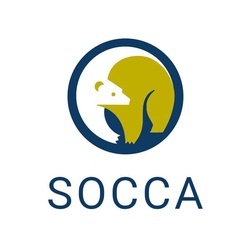
Aboriginal Business Financing Program - Private Project
SOCCA- Maximum amount : 99,000 $
- Up to 75% of project cost
- All industries

CAN Health Network
CAN Health Network- No Condition
- Health care and social assistance

JEDI — Indigenous Business Incubator Program
Joint Economic Development Initiative (JEDI)- No Condition
- All industries
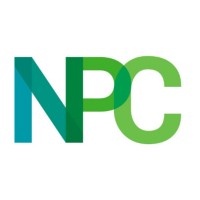
Fast-Track to Financing Program
Natural Products Canada (NPC)- Maximum amount : 25,000 $
- Up to 40% of project cost
- Agriculture, forestry, fishing and hunting
- Manufacturing
- Administrative and support, waste management and remediation services
- Health care and social assistance
Download the official 2026 grants guide
Access key insights to maximize your grant funding opportunities
Understand the different funding programs and find the best options for your business.

Women Entrepreneurship Knowledge Hub
Women Entrepreneurship Knowledge Hub- No Condition
- All industries

CRIM —Support
Computer Research Institute of Montreal (CRIM)- No Condition
- Information and cultural industries
- Professional, scientific and technical services

JACOBB Center for Applied Artificial Intelligence
JACOBB Center for Applied Artificial Intelligence- No Condition
- Professional, scientific and technical services

TECHNATION — Career Ready Program
TECHNATION- Maximum amount : 7,000 $
- Up to 70% of project cost
- Agriculture, forestry, fishing and hunting
- Manufacturing
- Information and cultural industries
- Professional, scientific and technical services

ECO Canada — Science Horizons Youth Internship (SHI)
ECO Canada- Maximum amount : 25,000 $
- Up to 80% of project cost
- Professional, scientific and technical services
Find tailored funding for your business
Discover more grants on the helloDarwin platform
Look through over 4,000 grants, tax credits, loans and more financial aid on the helloDarwin application.

ECO Canada — Youth Employment in Natural Resources YNR
ECO Canada- Maximum amount : 20,000 $
- Up to 75% of project cost
- Agriculture, forestry, fishing and hunting
- Mining, quarrying, and oil and gas extraction
- Professional, scientific and technical services
- Management of companies and enterprises

Access to Talent Program
Natural Products Canada (NPC)- Maximum amount : 75,000 $
- Up to 40% of project cost
- Agriculture, forestry, fishing and hunting
- Manufacturing
- Administrative and support, waste management and remediation services
- Health care and social assistance

CED — Regional Artificial Intelligence Initiative
Canada Economic Development for Quebec Regions (CED)- Up to 50% of project cost
- Agriculture, forestry, fishing and hunting
- Manufacturing
- Information and cultural industries

Regional Development Program — Advanced Manufacturing and Innovation Competitiveness (AMIC)
Government of Ontario- From $500,000 to $1,500,000
- Up to 15% of project cost
- Manufacturing

Call for collaborative and structuring innovation projects in Quebec's strategic sectors
Gouvernement du Québec- Maximum amount : 1,000,000 $
- Up to 35% of project cost
- Utilities
- Manufacturing
- Transportation and warehousing
- Information and cultural industries
Tired of scrolling through all these programs?
Filter grants relevant for your company on the helloDarwin platform
Sort over 4,000 business funds by your industry, projects and location with helloDarwin's free app.

Economic Development & Growth in Employment (EDGE) Incentive Program
City of Toronto- From $3,000,000 to $10,000,000
- Up to 77% of project cost
- Manufacturing
- Wholesale trade
- Information and cultural industries
- Professional, scientific and technical services

Innovative Projects Program
Hydro-Québec- Maximum amount : 12,000,000 $
- Up to 75% of project cost
- Agriculture, forestry, fishing and hunting
- Construction
- Manufacturing
- Wholesale trade

- Maximum amount : 3,000,000 $
- Up to 30% of project cost
- Professional, scientific and technical services

- Maximum amount : 500,000 $
- Up to 50% of project cost
- All industries

Artificial Intelligence for Canadian Energy Innovation
Natural Resources Canada (NRCan)- From $500,000 to $1,500,000
- Up to 75% of project cost
- Utilities
- Manufacturing
- Transportation and warehousing
- Professional, scientific and technical services
Tips to Maximize Your Chances of Obtaining a Grant
Obtaining a grant can be a powerful lever for the development of your business, but the competition is often fierce. To maximize your chances of success, it is essential to prepare a strong application, develop strategic collaborations, and use the funds obtained effectively to ensure sustainable growth. Here are some tips to help you navigate this process successfully.

Futurpreneur
Futurpreneur Canada- From $5,000 to $60,000
- All industries

Film or Video Production Services Tax Credit
Canadian Heritage- No Condition
- Information and cultural industries

LTI³ Project
Institut d'innovation en logistique du Québec (InnovLOG)- Maximum amount : 28,500 $
- Up to 70% of project cost
- Transportation and warehousing

Starter Company Plus
Government of Ontario- Maximum amount : 5,000 $
- Up to 25% of project cost
- Manufacturing
- Retail trade
- Information and cultural industries
- Professional, scientific and technical services

CanExport Innovation
Trade Commissioner Service (TCS)- Maximum amount : 75,000 $
- Up to 75% of project cost
- All industries
Discover how much grant funding is available for your business
Subsidize your projects with grants!
Use our free grant estimator to quickly identify the available grant amounts for which your company may be eligible.

Technoclimat
Environnement Québec (MELCC)- Maximum amount : 3,000,000 $
- Up to 50% of project cost
- Agriculture, forestry, fishing and hunting
- Utilities
- Construction
- Manufacturing

Ontario Food Exports — Services for Exporters
Government of Ontario- No Condition
- Agriculture, forestry, fishing and hunting
- Manufacturing
- Wholesale trade

Support program for positioning Quebec alcohol in the SAQ network
Ministère de l'économie, de l'innovation et de l'énergie du Québec (MEIE)- Maximum amount : 1,950,000 $
- Up to 70% of project cost
- Manufacturing
- Retail trade
- Accommodation and food services

NovaScience Program — Support for employment in research and innovation
Gouvernement du Québec- Maximum amount : 30,000 $
- Up to 50% of project cost
- Information and cultural industries
- Professional, scientific and technical services
- Health care and social assistance

Financial assistance for the hiring of a person to integrate a job on a long-term basis
Gouvernement du Québec- No Condition
- Construction
- Other services (except public administration)
- Public administration
Access over 4000 different funding opportunities
Try the helloDarwin platform today and find programs that fit your needs
The helloDarwin application makes it easy to unlock grants so your business can grow faster—with less hassle and more impact.

AgriInsurance
Agriculture and Agri-Food Canada (AAFC)- No Condition
- Agriculture, forestry, fishing and hunting

Regional Defence Investment Initiative – Northern Ontario
Federal Economic Development Agency for Northern Ontario (FedNor)- Up to 100% of project cost
- Mining, quarrying, and oil and gas extraction
- Construction
- Manufacturing
- Information and cultural industries

Stade V
Québec Tech- Up to 65% of project cost
- All industries

Canada Small Business Financing Loan (CSBFL)
Innovation Canada- Maximum amount : 1,000,000 $
- All industries

CCC — Global Bid Opportunity Finder (GBOF)
Canadian Commercial Corporation (CCC)- No Condition
- All industries
Download the official 2026 grants guide
Access key insights to maximize your grant funding opportunities
Understand the different funding programs and find the best options for your business.

Healthy Eating Program Component 2 – Support for the development and modification of the nutritional value of processed foods
Ministry of Agriculture, Fisheries and Food (MAPAQ)- From $10,000 to $150,000
- Up to 60% of project cost
- Manufacturing

Abandoned Boats Program - Assessment and Removals (A&R) component
Transport Canada- Maximum amount : 250,000 $
- Up to 100% of project cost
- Transportation and warehousing
- Administrative and support, waste management and remediation services
- Public administration

Energir — Energy efficiency program – Feasibility study
Energir- Maximum amount : 1,000,000 $
- Up to 50% of project cost
- Manufacturing
- Educational services
- Health care and social assistance
- Accommodation and food services

African Swine Fever Industry Preparedness Program (ASFIPP) - Prevention and Preparedness Stream
Agriculture and Agri-Food Canada (AAFC)- No Condition
- Agriculture, forestry, fishing and hunting
- Manufacturing

ICTC — Work Integrated Learning (WIL) Digital
Information and Communications Technology Council (ICTC)- Maximum amount : 7,000 $
- Up to 70% of project cost
- Information and cultural industries
Find tailored funding for your business
Discover more grants on the helloDarwin platform
Look through over 4,000 grants, tax credits, loans and more financial aid on the helloDarwin application.

Commerce-Montreal
City of Montreal (MTL)- Maximum amount : 50,000 $
- Up to 40% of project cost
- Retail trade
- Accommodation and food services

Healthy Eating Program Component 3 – Support for activities and structural projects
Ministry of Agriculture, Fisheries and Food (MAPAQ)- From $40,000 to $300,000
- Up to 70% of project cost
- Agriculture, forestry, fishing and hunting
- Manufacturing
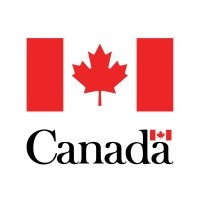
Supporting the Canadian Red Cross' Urgent Relief Efforts Related to COVID-19, Floods and Wildfires
Public Safety Canada (PSC)- No Condition
- Health care and social assistance
- Other services (except public administration)
- Public administration

Funding for customized AI training
Scale AI Cluster- From $5,000 to $1,000,000
- Professional, scientific and technical services

Energir — Energy efficiency program – Implementation of efficiency measures
Energir- From $1,000 to $1,000,000
- Up to 50% of project cost
- All industries
Tired of scrolling through all these programs?
Filter grants relevant for your company on the helloDarwin platform
Sort over 4,000 business funds by your industry, projects and location with helloDarwin's free app.

Charge+
Propulsion Quebec- Maximum amount : 100,000 $
- Up to 50% of project cost
- Transportation and warehousing
- Public administration

Small Craft Harbours Abandoned and Wrecked Vessels Removal Program
Fisheries and Oceans Canada (DFO)- Up to 75% of project cost
- Agriculture, forestry, fishing and hunting
- Other services (except public administration)
- Public administration

International Climate Cooperation Program (ICCP)
Environnement Québec (MELCC)- No Condition
- Professional, scientific and technical services
- Educational services
- Other services (except public administration)
- Public administration

Energir — Energy efficiency program - Efficient construction and renovation
Energir- From $5,000 to $325,000
- Up to 75% of project cost
- Utilities
- Construction
- Manufacturing
- Educational services

SODEC — Support for promotion and distribution – Component 1b
Société de développement des entreprises culturelles (SODEC)- Maximum amount : 50,000 $
- Up to 80% of project cost
- Information and cultural industries
Tips to Maximize Your Chances of Obtaining a Grant
Obtaining a grant can be a powerful lever for the development of your business, but the competition is often fierce. To maximize your chances of success, it is essential to prepare a strong application, develop strategic collaborations, and use the funds obtained effectively to ensure sustainable growth. Here are some tips to help you navigate this process successfully.

FABconstruction – Stream 2 : Support for productivity enhancement
Digital Governance Institute (IGN)- Maximum amount : 25,000 $
- Up to 50% of project cost
- Construction
- Manufacturing

Community Resilience Fund (CRF)
Public Safety Canada (PSC)- Maximum amount : 35,000,000 $
- Up to 95% of project cost
- Educational services
- Health care and social assistance
- Other services (except public administration)
- Public administration

FABconstruction – Stream 1 : Business process analysis and action plan
Digital Governance Institute (IGN)- No Condition
- Agriculture, forestry, fishing and hunting
- Construction
- Manufacturing

Financial support to assess your energy use Hydro Quebec
Hydro-Québec- Maximum amount : 50,000 $
- Up to 40% of project cost
- Utilities
- Construction
- Manufacturing
- Wholesale trade

Enbridge Gas Quebec — Custom-made project
Enbridge Gas Quebec- Maximum amount : 75,000 $
- Up to 40% of project cost
- Utilities
- Construction
- Manufacturing
- Wholesale trade
Discover how much grant funding is available for your business
Subsidize your projects with grants!
Use our free grant estimator to quickly identify the available grant amounts for which your company may be eligible.

Qualifying training in the workplace
Gouvernement du Québec- Maximum amount : 100,000 $
- All industries

Additional deduction for transportation costs for manufacturing SMEs
Revenu Québec- Up to 25% of project cost
- Manufacturing

MAPAQ — Ministerial initiative Proximity — Component 1
Ministry of Agriculture, Fisheries and Food (MAPAQ)- From $7,000 to $50,000
- Up to 70% of project cost
- Agriculture, forestry, fishing and hunting

Novoclimat — Construction professionals — Small Multiple-Unit Buildings
Gouvernement du Québec- No Condition
- Construction
- Real estate and rental and leasing

AgroPerformance – Stream 2 : Support for specific agricultural sectors in adopting priority equipment
Gouvernement du Québec- From $5,000 to $50,000
- Up to 50% of project cost
- Agriculture, forestry, fishing and hunting
Access over 4000 different funding opportunities
Try the helloDarwin platform today and find programs that fit your needs
The helloDarwin application makes it easy to unlock grants so your business can grow faster—with less hassle and more impact.

Support for music and variety companies — Component 2: Support for management activities and Component 3: Para-industrial sector - Project support
Société de développement des entreprises culturelles (SODEC)- No Condition
- Arts, entertainment and recreation

Collaborative Science, Technology and Innovation Program - Collaborative R&D Initiatives
National Research Council Canada (NRC)- No Condition
- Professional, scientific and technical services
- Educational services
- Health care and social assistance
- Public administration

Indigenous Intellectual Property Program (IIPP) — Project Stream
Innovation Canada- Maximum amount : 50,000 $
- Professional, scientific and technical services
- Educational services
- Arts, entertainment and recreation
- Other services (except public administration)

Competitiveness and Environment Program - Component 1
Ministry of Agriculture, Fisheries and Food (MAPAQ)- Maximum amount : 100,000 $
- Up to 60% of project cost
- Manufacturing
- Transportation and warehousing

Proof-of-Concept Program
Natural Products Canada (NPC)- From $100,000 to $350,000
- Up to 40% of project cost
- Agriculture, forestry, fishing and hunting
- Manufacturing
- Administrative and support, waste management and remediation services
- Health care and social assistance
Download the official 2026 grants guide
Access key insights to maximize your grant funding opportunities
Understand the different funding programs and find the best options for your business.

Venture for Canada — Internship Program
Venture for Canada- Maximum amount : 7,000 $
- Up to 50% of project cost
- All industries

Renewable Natural Gas Production Support Program — Stream 1
Gouvernement du Québec- Maximum amount : 300,000 $
- Up to 75% of project cost
- Mining, quarrying, and oil and gas extraction
- Utilities

Financial Assistance Program for the Promotion of French – stream 1
Office québécois de la langue française (OQLF)- Maximum amount : 100,000 $
- Up to 75% of project cost
- Wholesale trade
- Retail trade
- Information and cultural industries
- Professional, scientific and technical services

Collaborative Industrial Research and Support to Innovative Entrepreneurship — Stream 3
Ministère de l'économie, de l'innovation et de l'énergie du Québec (MEIE)- Maximum amount : 1,500,000 $
- Up to 50% of project cost
- Manufacturing
- Information and cultural industries
- Professional, scientific and technical services

Financial Assistance Program for the Promotion of French – stream 2
Office québécois de la langue française (OQLF)- Maximum amount : 125,000 $
- Up to 75% of project cost
- All industries
Find tailored funding for your business
Discover more grants on the helloDarwin platform
Look through over 4,000 grants, tax credits, loans and more financial aid on the helloDarwin application.

MTRIC — PARTENAR-IA — Industry
Metal Transformation Research and Innovation Consortium (MTRIC)- Maximum amount : 1,500,000 $
- Up to 35% of project cost
- Mining, quarrying, and oil and gas extraction
- Manufacturing

Dairy Direct Payment Program
Canadian Dairy Commission (CDC)- No Condition
- Agriculture, forestry, fishing and hunting

Regional defence investment initiative (RDII) – Quebec
Canada Economic Development for Quebec Regions (CED)- Up to 90% of project cost
- Manufacturing
- Professional, scientific and technical services
- Public administration

Regions and Rurality Fund — convenience stores
Gouvernement du Québec- From $10,000 to $150,000
- Up to 85% of project cost
- Retail trade

Capitale-Innovation
Quebec City- Maximum amount : 150,000 $
- Up to 50% of project cost
- Agriculture, forestry, fishing and hunting
- Manufacturing
- Information and cultural industries
- Finance and insurance
Tired of scrolling through all these programs?
Filter grants relevant for your company on the helloDarwin platform
Sort over 4,000 business funds by your industry, projects and location with helloDarwin's free app.

REGI — Jobs and Growth Fund — CED (QC) — For profit
Canada Economic Development for Quebec Regions (CED)- Up to 50% of project cost
- Manufacturing
- Professional, scientific and technical services
- Health care and social assistance
- Other services (except public administration)

ESSOR – Component 3: Support for investment projects to reduce environmental footprint
Investissement Québec (IQ)- Minimum amount : 100,000 $
- Up to 70% of project cost
- All industries

Financial support for the integration of foreign-trained employees
Gouvernement du Québec- Up to 70% of project cost
- All industries

MAPAQ — Food Processing Program Component 3 — Food quality and safety management
Ministry of Agriculture, Fisheries and Food (MAPAQ)- From $7,500 to $150,000
- Up to 50% of project cost
- Manufacturing

Capitale-Commerce
Quebec City- From $5,000 to $75,000
- Up to 50% of project cost
- All industries
Tips to Maximize Your Chances of Obtaining a Grant
Obtaining a grant can be a powerful lever for the development of your business, but the competition is often fierce. To maximize your chances of success, it is essential to prepare a strong application, develop strategic collaborations, and use the funds obtained effectively to ensure sustainable growth. Here are some tips to help you navigate this process successfully.

CELTIC-NEXT – Next Generation Communications Autumn 2025 call for proposals
National Research Council Canada (NRC)- No Condition
- Information and cultural industries
- Professional, scientific and technical services

MAPAQ — Ministerial initiative Proximity — Component 2
Ministry of Agriculture, Fisheries and Food (MAPAQ)- From $5,000 to $50,000
- Up to 50% of project cost
- Agriculture, forestry, fishing and hunting
- Manufacturing

Private sector support program for the deployment of public fast charging stations
Gouvernement du Québec- Maximum amount : 2,500,000 $
- Up to 80% of project cost
- Retail trade
- Accommodation and food services

Regional Tariff Response Initiative (RTRI) – Atlantic Canada
Government of Canada- Maximum amount : 1,000,000 $
- Up to 25% of project cost
- Manufacturing
- Wholesale trade
- Transportation and warehousing
- Other services (except public administration)

MAPAQ — Prime-Vert — Component 2
Ministry of Agriculture, Fisheries and Food (MAPAQ)- Maximum amount : 100,000 $
- Up to 90% of project cost
- Agriculture, forestry, fishing and hunting
Discover how much grant funding is available for your business
Subsidize your projects with grants!
Use our free grant estimator to quickly identify the available grant amounts for which your company may be eligible.

Eastern Ontario Development Fund (EODF) — Business project grants
Government of Ontario- From $200,000 to $1,500,000
- Up to 15% of project cost
- All industries
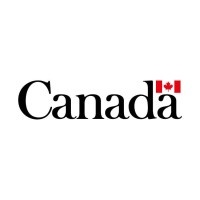
Regional Defence Investment Initiative in Southern Ontario
Federal Economic Development Agency for Southern Ontario (FedDev)- From $125,000 to $10,000,000
- Public administration

CQRDA — INNOV-R SME
Centre québécois de recherche et de développement de l’aluminium (CQRDA)- Maximum amount : 450,000 $
- Up to 50% of project cost
- Utilities
- Manufacturing
- Professional, scientific and technical services

Remission of tariffs that apply on certain goods from the U.S.
Government of Canada- No Condition
- All industries

ECO Canada — Foreign Talent Development
ECO Canada- Maximum amount : 15,000 $
- Up to 75% of project cost
- All industries
Access over 4000 different funding opportunities
Try the helloDarwin platform today and find programs that fit your needs
The helloDarwin application makes it easy to unlock grants so your business can grow faster—with less hassle and more impact.

Magazine — Aid to Publishers
Canadian Heritage- Maximum amount : 1,500,000 $
- Up to 75% of project cost
- Information and cultural industries

Tax Credit for an On-the-Job Training Period – Individuals
Revenu Québec- No Condition
- All industries

FedNor — Regional Tariff Response Initiative
Federal Economic Development Agency for Northern Ontario (FedNor)- Maximum amount : 1,000,000 $
- Up to 50% of project cost
- Agriculture, forestry, fishing and hunting
- Mining, quarrying, and oil and gas extraction
- Manufacturing
- Professional, scientific and technical services

Development program — Black and People of Colour stream
Telefilm Canada- From $15,000 to $37,500
- Information and cultural industries
- Arts, entertainment and recreation

Collaborative Industrial Research and Support to Innovative Entrepreneurship — Stream 1
Ministère de l'économie, de l'innovation et de l'énergie du Québec (MEIE)- Maximum amount : 150,000 $
- Up to 50% of project cost
- Information and cultural industries
- Professional, scientific and technical services
Download the official 2026 grants guide
Access key insights to maximize your grant funding opportunities
Understand the different funding programs and find the best options for your business.

REGI — Business Scale-up and Productivity — CED (QC) — Not-for-profit
Canada Economic Development for Quebec Regions (CED)- Up to 50% of project cost
- Manufacturing
- Information and cultural industries

Northern Integrated Commercial Fisheries Initiative (NICFI) - Expansion and Diversification
Fisheries and Oceans Canada (DFO)- Up to 90% of project cost
- Agriculture, forestry, fishing and hunting

Northern Integrated Commercial Fisheries Initiative (NICFI) - Aquaculture Development
Fisheries and Oceans Canada (DFO)- Up to 90% of project cost
- Agriculture, forestry, fishing and hunting

Regional Tariff Response Initiative (RTRI) — Quebec
Government of Canada- From $100,000 to $1,000,000
- Up to 50% of project cost
- Manufacturing

Call for innovation projects in artificial intelligence and quantum technologies – collaborative industrial research and support for entrepreneurship
Gouvernement du Québec- Maximum amount : 1,500,000 $
- Up to 35% of project cost
- Agriculture, forestry, fishing and hunting
- Mining, quarrying, and oil and gas extraction
- Utilities
- Construction
Find tailored funding for your business
Discover more grants on the helloDarwin platform
Look through over 4,000 grants, tax credits, loans and more financial aid on the helloDarwin application.

Wood Innovation Program — Component 2
Gouvernement du Québec- From $200,000 to $1,000,000
- Up to 25% of project cost
- Agriculture, forestry, fishing and hunting
- Manufacturing
- Professional, scientific and technical services
- Educational services

Wood Innovation Program - component 1
Gouvernement du Québec- From $200,000 to $2,500,000
- Up to 50% of project cost
- Agriculture, forestry, fishing and hunting
- Manufacturing

International Promotion Program
Telefilm Canada- From $2,500 to $40,000
- Information and cultural industries
- Arts, entertainment and recreation

Ontario Creates Magazine Fund — Diversity Enhancement Stream
Government of Ontario- From $5,000 to $15,000
- Up to 75% of project cost
- Information and cultural industries

Global Market Development Fund — Film and Television
Government of Ontario- Maximum amount : 15,000 $
- Up to 50% of project cost
- Information and cultural industries
Tired of scrolling through all these programs?
Filter grants relevant for your company on the helloDarwin platform
Sort over 4,000 business funds by your industry, projects and location with helloDarwin's free app.

Production program — French market budgets $3.5M+
Telefilm Canada- Maximum amount : 3,500,000 $
- Up to 49% of project cost
- Information and cultural industries
- Arts, entertainment and recreation

Digital Citizen Contribution Program (DCCP)
Canadian Heritage- Maximum amount : 380,000 $
- Information and cultural industries
- Professional, scientific and technical services
- Educational services
- Health care and social assistance

Global Market Development — IDM Fund
Government of Ontario- Maximum amount : 15,000 $
- Up to 50% of project cost
- Information and cultural industries
- Arts, entertainment and recreation

Indigenous Forestry Initiative
Natural Resources Canada (NRCan)- Maximum amount : 50,000 $
- Agriculture, forestry, fishing and hunting

Global Market Development for Music Managers
Government of Ontario- Maximum amount : 10,000 $
- Up to 50% of project cost
- Information and cultural industries
Tips to Maximize Your Chances of Obtaining a Grant
Obtaining a grant can be a powerful lever for the development of your business, but the competition is often fierce. To maximize your chances of success, it is essential to prepare a strong application, develop strategic collaborations, and use the funds obtained effectively to ensure sustainable growth. Here are some tips to help you navigate this process successfully.

Canada Periodical Fund — Business Innovation
Canadian Heritage- Maximum amount : 500,000 $
- Up to 75% of project cost
- Information and cultural industries

Critical Minerals Research, Development and Demonstration Program
National Research Council Canada (NRC)- No Condition
- Mining, quarrying, and oil and gas extraction

Production program — Indigenous stream
Telefilm Canada- Up to 30% of project cost
- Information and cultural industries
- Arts, entertainment and recreation

Global Market Development Fund – Book
Government of Ontario- Maximum amount : 15,000 $
- Up to 50% of project cost
- Information and cultural industries

Universal Broadband Fund (UBF)
Innovation Canada- Up to 90% of project cost
- Information and cultural industries